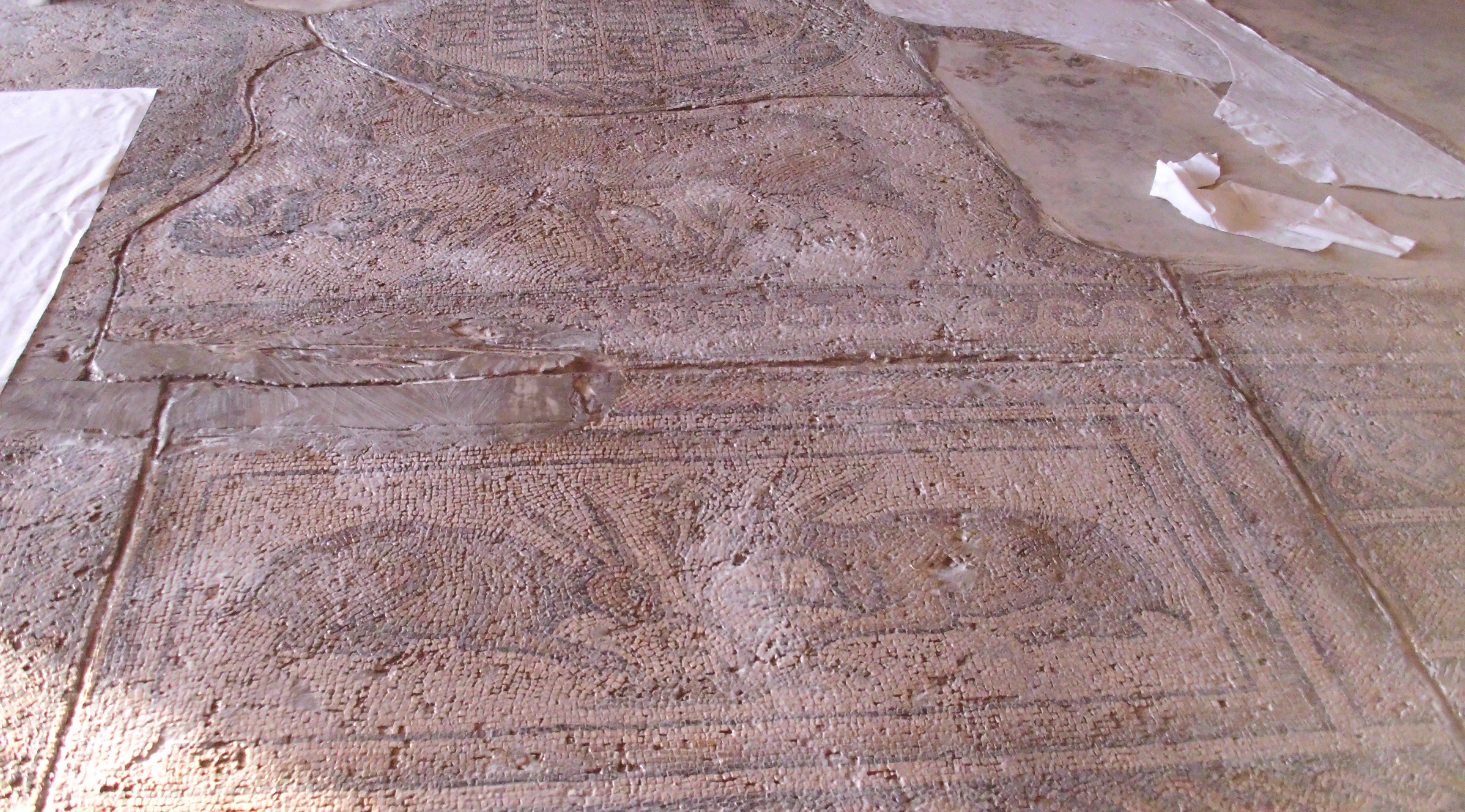Saving Syria’s Cultural Heritage

Preparing a mosaic in Apamea Museum to safeguard it . Photo taken by: Mohammed al-Batal.
Activists in Idlib have established a centre to protect cultural heritage amidst a conflict which has seen the widespread destruction of many of Syria’s archaeological treasures..
Historic sites have been damaged in bombings and by vandalism, with numerous artefacts stolen to be sold off by private dealers.
The Syrian Cultural Heritage Protection Centre aims to both document such violations and implement restoration projects wherever possible.
Centre director Abdul Rahman Yahya explained that the body would operate as an alternative to the Damascus regime’s department of antiquities and museums.
“The new centre is a non-governmental, non-profit organisation that works in all liberated areas of Idlib, parts of the northern Hama countryside and the northern and western Aleppo countryside,” he said.
In northern Syria, the regime as well as parts of the armed opposition have destroyed artefacts, while antique dealers have taken advantage of the destruction wreaked by regime airstrikes on World Heritage sites like Idlib’s Chanchrah village to smuggle artefacts to Turkey and Iraq.
A preliminary UNESCO report in April 2016 noted the destruction caused to World Heritage sites in Syria. Following a mission to Palmyra after its liberation from the Islamic State (IS), for instance, UN experts logged the vast destruction in the historic city’s museum, where they found priceless statues and stone sarcophagi smashed and their remnants scattered.
Yahya, a 45-year-old mechanical engineer, explained that the centre aimed to “protect all cultural and civilizational heritage, disseminate cultural awareness, scientifically document monuments, document the damage of archaeological sites and historic buildings, prepare protection and restoration projects and implement them”.
Yahya said that they had already implemented a number of restorations, including documenting and preserving 1,700 artifacts.
The centre is composed of a group of 11 academics who previously worked in the government’s monuments and museums department. They document violations as well as taking all possible measures to protect vulnerable monuments.
“Our work expanded and grew even more with the systematic targeting of the monuments by the regime and the Russians,” explained team member Ahmed al-Aanan, 40, who has an archeology degree from Damascus university. “So we always try to take precautionary measures to protect monuments in various areas.”
Of particular importance is the archaeological museum of Maarrat al-Nu’man, known as Khan Murad Pasha, which is viewed as one of the most important museums in the Middle East due to its extensive collection of mosaics, including images of Hercules, Kafurtab and others.
The centre is also working to oversee the Apamea archaeological museum, located in Qalaat al-Madiq in the north-west Hama countryside.
“Apamea is important because it dates from the Ottoman era and is known as Qalaat al-Madiq, built by the governor Mohammad Agha Kazlar in the reign of Sultan Suleiman the Magnificent,” explained Mohammed al-Batal, who used to work at the department of antiquities and museums. “It was the station for commercial convoys and pilgrims coming from Istanbul and contains Greek and Roman paintings and Islamic and Byzantine ceramics.”
The 35-year-old continued, “We have intervened in order to protect these paintings, out of fear of shelling from Syrian and Russian aircraft, just as happened in Maarrat al-Nu’man museum, where we documented more than 11 attacks by Russian aircraft on the Ebla archaeological site and Tel Mardikh, in addition to Maarrat al-Nu’man museum and Chanchrah village – classified by UNESCO as one of five [Syrian] World Heritage sites in similar raids.”
Most of the areas of archaeological interest are in the western countryside of Aleppo and north Hama, and the centre has managed to survey sites including ancient mosques and historical buildings in Jisr al-Shughur, Saraqib, Najiyeh, Turkmen and Ebla as well as the monuments of Mount Zawiya.
It has also documented destruction at more than 140 out of the 470 archaeological sites in Idlib and its countryside.
“We are restoring walls partially demolished by shelling and we preserve mosaics by painting them with glue, covering them with a cloth and placing sandbags over this to protect them from shrapnel,” said al-Batal. “As for pieces of pottery, they are protected with bubble wrap. We have done restorations in Maarrat al-Nu’man museum and the museum of Apamea”.
A number of governments have imposed restrictions on the import of Syrian antiquities to address looting and international smuggling.
On August 18, 2016 the United States limited imports of items of historical and cultural heritage from Syria.
Al-Batal said they were also lobbying to address this serious problem at home.
“The Syrian Cultural Heritage Protection Centre is talking to local councils and Sharia courts in liberated areas to develop a law that would criminalise tampering with or vandalising archaeological sites,” he continued. “The centre noticed a number of violations at archaeological sites consisting of antiques dealers digging through these locations to find artefacts and smuggle them into Turkey, then sell them to international dealers.”
